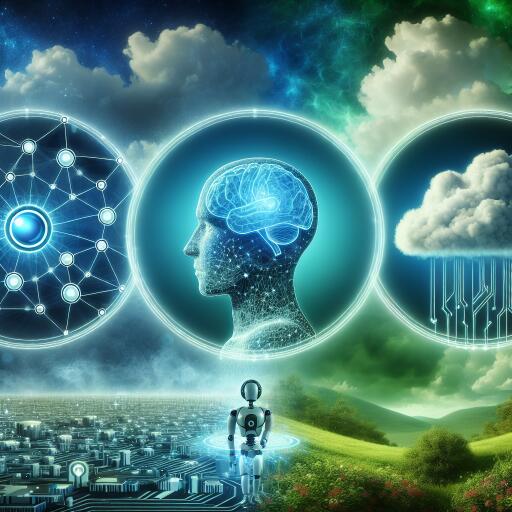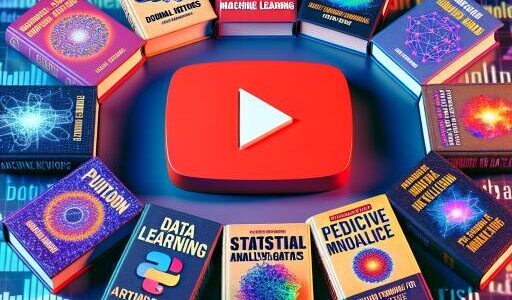The Synergy of IoT, AI, and Cloud Computing: Pioneering Environmental Sustainability in the Digital Realm
In the vibrant landscape of digital technology, the fusion of the Internet of Things (IoT), Artificial Intelligence (AI), and cloud computing is not merely catalyzing the pace of digitalization but also emerging as a cornerstone for environmental sustainability. This trio, aptly dubbed the “holy trinity,” is providing compelling solutions to the often overlooked ecological footprint of digital expansion.
Digital advancements, heralded for propelling the United Nations’ sustainable development goals, have their share of environmental implications. The vast infrastructures needed for global networks consume considerable amounts of materials, space, and energy, raising pressing concerns about their ecological impact. Addressing these impacts, however, lies within the capabilities of IoT, AI, and cloud computing.
The Environmental Intelligence of IoT
Iot technologies, encompassing everything from smart meters to interconnected sensors and devices, play a pivotal role in enhancing energy efficiency. By generating and utilizing data, IoT promotes dynamic adjustments in energy consumption, thereby reducing wastage. Smart grids, for instance, balance energy distribution based on demand, while IoT-based sensors in data centers help optimize cooling systems, significantly lowering energy use.
AI’s Role in Sustainable Energy Management
AI extends its capabilities far beyond conventional applications, stepping firmly into sustainable energy management. Through predictive analytics and intelligent algorithms, AI aids in forecasting energy demands, optimizing resource allocation, and implementing energy-saving measures across various systems. It contributes to smarter, more efficient operations, reducing unnecessary energy expenditure and minimizing carbon footprints.
Cloud Computing: A Catalyst for Green Infrastructure
Cloud computing introduces a paradigm shift in how data storage and processing are managed, eliminating the need for extensive physical infrastructures. Through server consolidation and efficient data center management, cloud services significantly reduce energy consumption and optimize resource use. Moreover, the cloud’s scalability ensures that computational resources are accurately aligned with demand, preventing wastage and fostering greener operational practices.
Enhancing Sustainability Through Technology Integration
The real transformation, however, occurs when IoT, AI, and cloud computing converge. This integration harnesses the strengths of each technology, facilitating a comprehensive approach to sustainable digitalization. Cloud platforms efficiently process and store data from IoT devices, while AI algorithms analyze this data to generate insights, enabling smarter decision-making and operation. Such synergy not only improves energy efficiency but also paves the way for groundbreaking solutions in environmental sustainability.
Practical applications of this integration are already making strides in optimizing digital ecosystems. Managed services that leverage AI and cloud technologies, for instance, offer scalable solutions for enhancing machine learning capabilities while prioritizing environmental sustainability. Innovations include optimizing data center operations through real-time energy consumption data analysis and advancing supply chain sustainability through AI-driven insights.
Moving Toward a Greener Digital Ecosystem
The journey towards a more sustainable digital infrastructure requires not just the application of advanced technologies but also a holistic understanding of their environmental impact. As IoT, AI, and cloud computing continue to evolve, their combined potential offers a promising pathway to reduce the digital world’s ecological footprint. This approach not only addresses the immediate challenges of resource efficiency and emissions reduction but also sets the stage for a sustainable digital future.
In essence, the intersection of IoT, AI, and cloud computing presents a compelling strategy for realizing sustainable digitalization. Through intelligent analysis, efficient resource use, and innovative solutions, this trinity of technologies is guiding the tech industry towards a greener, more sustainable trajectory. As these technologies further intertwine, they promise to redefine our digital ecosystems, reducing their environmental impact and contributing to a sustainable world.
Patrick Strauss, a visionary in digital engineering and the Chief Intelligent Environments Solutions Officer at GlobalLogic, emphasizes the imperative of harnessing these technologies. With over three decades of expertise in emerging technologies and digital transformation, Strauss champions the integration of IoT, AI, and cloud computing as pivotal for advancing environmental sustainability in the digital age.
Discover more about the transformative power of digital technologies in shaping a sustainable future by tuning into the Future Human: The Series podcast. Available now on Spotify, Apple, or wherever you get your podcasts.










